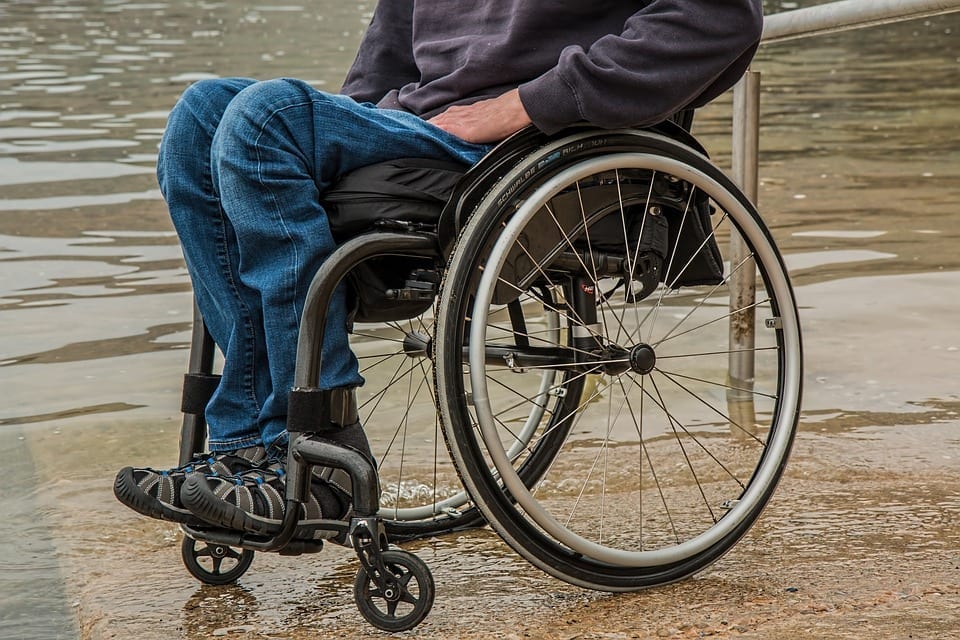At-fault parties have to take a victim as they find them. It’s called the eggshell skull rule (based on a previous court case). They can’t argue they shouldn’t be liable for certain damages because a person was more vulnerable to injury.
There’s a vast amount of information online about what accident victims or their surviving family members can and should do. There’s guidance on steps to take after an accident, how to file a personal injury lawsuit, and who can file a wrongful death suit.
All of this legal information is important, but it all has an issue in common. Many law firms gear it toward previously non-disabled individuals. The content focuses on victims who had full physical capabilities at the time of the accident and now suffer from a temporary injury or permanent condition.
But car crashes, slip and falls, and other accidents don’t impact young or middle-aged non-disabled individuals only. People with disabilities and who are over the age of 65 with limited mobility or other medical conditions experience serious accidents, too. How they and their families address pursuing compensation, though, differs from the process for a previously non-disabled person.
Vulnerable Populations in the U.S.
There are about 73 million baby boomers in the U.S., according to the U.S. Census Bureau. About 10,000 boomers turn 65 years old every day, and by 2030, every boomer will be at least 65 years old.
Taking the boomer generation’s age into account is important. The American population will have a much larger percentage of seniors than ever before. People over 65 years old made up 12.4% of the population in 2000 and 16% by 2018. In the coming years, they’ll hold an even greater share. As a consequence, more seniors might be involved in serious accidents.
According to the U.S. Centers for Disease Control (CDC), 61 million adults, about 26%, have a disability. More than 1.3 million individuals between the ages of 16 and 20 years have a disability in the U.S., according to the U.S. Department of Health & Human Services. Tens of millions of individuals with disabilities go to school, work, travel, and live full lives in the U.S. and also experience devastating accidents.
Seniors Face a Higher Risk of Injury and Death in Crashes
Owning a car and being able to drive are key factors in being independent in the U.S. In most areas of the country, public transportation is sorely lacking. If people want to run errands and visit friends and family, they need transportation.

Seniors, in particular, want to remain mobile and independent. They don’t want to rely too heavily on their children, friends, or ride services. But seniors and their families have to consider the consequences of being behind the wheel. Though older drivers aren’t more likely to be in a crash, they’re more likely to be injured or killed if involved in a collision.
In 2017, about 7,700 adults aged 65 and older died in motor vehicle crashes. More than 257,000 were treated in the ER for injuries, according to the CDC. Every day, collisions cause injuries to more than 700 seniors.
Researchers at the Insurance Institute of Highway Safety (IIHS) also found a higher risk of death to the elderly. They reviewed police-reported crashes between 1990 and 1995. Driver crash involvement rates per capita decreased with age. However, fatal involvement rates per capita increased with age after 70.
The IIHS researchers calculated that crash involvement for older drivers could increase by 178% by 2030 and would account for about 40% of the anticipated increase in all crashes. Fatal involvement for older drivers could increase by 155% by 2030, and drivers 65 years and older would account for more than half of the total increase in deadly crashes.
Seniors Face a Higher Risk of Fall Injuries
The factors that make seniors more vulnerable to injuries and death in car crashes exist in all other types of incidents as well. Consider slip and falls. Seniors might suffer a fall in another person’s home, at a business, on public property, or at a care facility.
Falls are a leading cause of injuries and deaths in U.S. seniors. Every year, 3 million seniors are treated in ERs for fall-related injuries, and over 800,000 of them are hospitalized, according to the CDC. The most common reasons for hospitalization are hip fractures and head injuries.
Between 2007 and 2016, fall death rates climbed 30% for older adults, according to the CDC. If the fatal falls continued to increase at the same rate, the CDC anticipates seven fall deaths each hour by 2030.
Why Seniors are More Vulnerable
Seniors are more vulnerable to injury and death in accidents for several reasons. Older individuals are more likely to have fragile bones due to osteoporosis, osteopenia, or other health factors. More than 53 million people either have osteoporosis or have a high risk for the condition due to low bone mass, the National Institutes of Health reported. Over time, our bones lose more minerals, like calcium, than are replenished. They become thinner and easier to fracture.
Seniors involved in accidents are more likely to break bones, which in turn, puts them through serious medical care. Bone fractures often impair their mobility. Once seniors lose a significant amount of movement, they may never return to their previous abilities, greatly reducing their quality of life.
Other medical conditions, like diabetes and heart disease, make seniors more vulnerable. Seniors who are injured in an accident have to go through medical treatment and recovery with comorbidities, which increases the risk of complications and poor outcomes.
People with Disabilities Have Unique and Similar Vulnerabilities
Of all disabled adults, 13.7% experience a mobility disability, 10.8% experience a cognitive disability, 5.9% have a hearing impairment, and 4.6% have a vision impairment, according to the CDC.
Other types of disabilities are less apparent than deafness or blindness but are relevant in the case of an accident. Many individuals experience invisible disabilities that impact their physical capabilities and overall health. An accident, like a fall or auto collision, can result in new injuries and exacerbate a pre-existing condition.
Adults with disabilities also experience higher rates of certain conditions—11.5% of individuals with a disability have heart disease, and 16.3% of individuals with a disability have diabetes, the CDC reported. These conditions can increase the risk of complications and negative outcomes following serious injury accidents.
Personal Injury Claims Must Consider the Victim’s Specific Circumstances
People who are over 65 years old or who have a disability might be in a far different position than a non-disabled individual after an accident. They and their personal injury lawyers must consider how their age or physical condition impacts their experience and damages.
They Might Be Slower to Recover from Injuries
Someone over 65 or who has a pre-existing disability might not recover from their injuries as quickly as a younger, non-disabled individual. A longer, slower recovery can result in a longer duration of pain, discomfort, and immobility; more medical care; and a greater loss of wages.
Their Pre-Existing Condition Might Get Worse
No one is entitled to damages for a pre-existing condition. However, accident victims are entitled to compensation for the extent to which an accident made their condition worse. This is challenging to document and prove, but it’s necessary. Elderly individuals or people with disabilities who find their condition has been exacerbated or aggravated by the accident deserve compensation for their pain and suffering, mental anguish, and additional medical bills.
They Might Require More Future Care
When a senior or person with a disability is hurt, it can increase the amount of medical care they need immediately and in the future. An elderly accident victim, for instance, might never be able to take care of themselves again. The circumstances might force them to hire at-home care or move into a long-term care facility.
They Might Have a Harder Time Returning to Work
Damages in an accident claim include lost wages and reduced earning potential. Seniors or people with disabilities might find it difficult to get back to work because of a longer recovery time. They might suffer such significant injuries that they can’t return to their previous positions. But people who are still able to work in some capacity face potential discrimination related to their age and disability during the job hunt. Some accident victims might find they can’t return to work at all.
They Might Experience a Greater Reduction in Quality of Life
If an accident causes a senior or person with a disability harm, it can have a more profound impact on their quality of life than a person who was previously non-disabled. The accident might worsen a person’s disability, or they might now suffer from more than one disabling condition. A senior who suffers a debilitating injury might never return to their previous mobility and activity levels.
Negligent Parties Are Responsible for All a Person’s Injuries
It’s imperative for accident victims who are over 65 years or have a disability to know that a negligent party is responsible for all their injuries, even those related to or made worse due to a pre-existing physical condition.
At-fault parties have to take a victim as they find them. It’s called the eggshell skull rule (based on a previous court case). They can’t argue they shouldn’t be liable for certain damages because a person was more vulnerable to injury.


Join the conversation!